Unlacquered brass bridge faucets add timeless charm to any kitchen. Learn all about this classic fixture design and find out if it could be the perfect addition to your home.
The bridge faucet is the ultimate example of form meets function. Not only is the style beautiful, but it is a powerhouse in the day-to-day work of any kitchen.
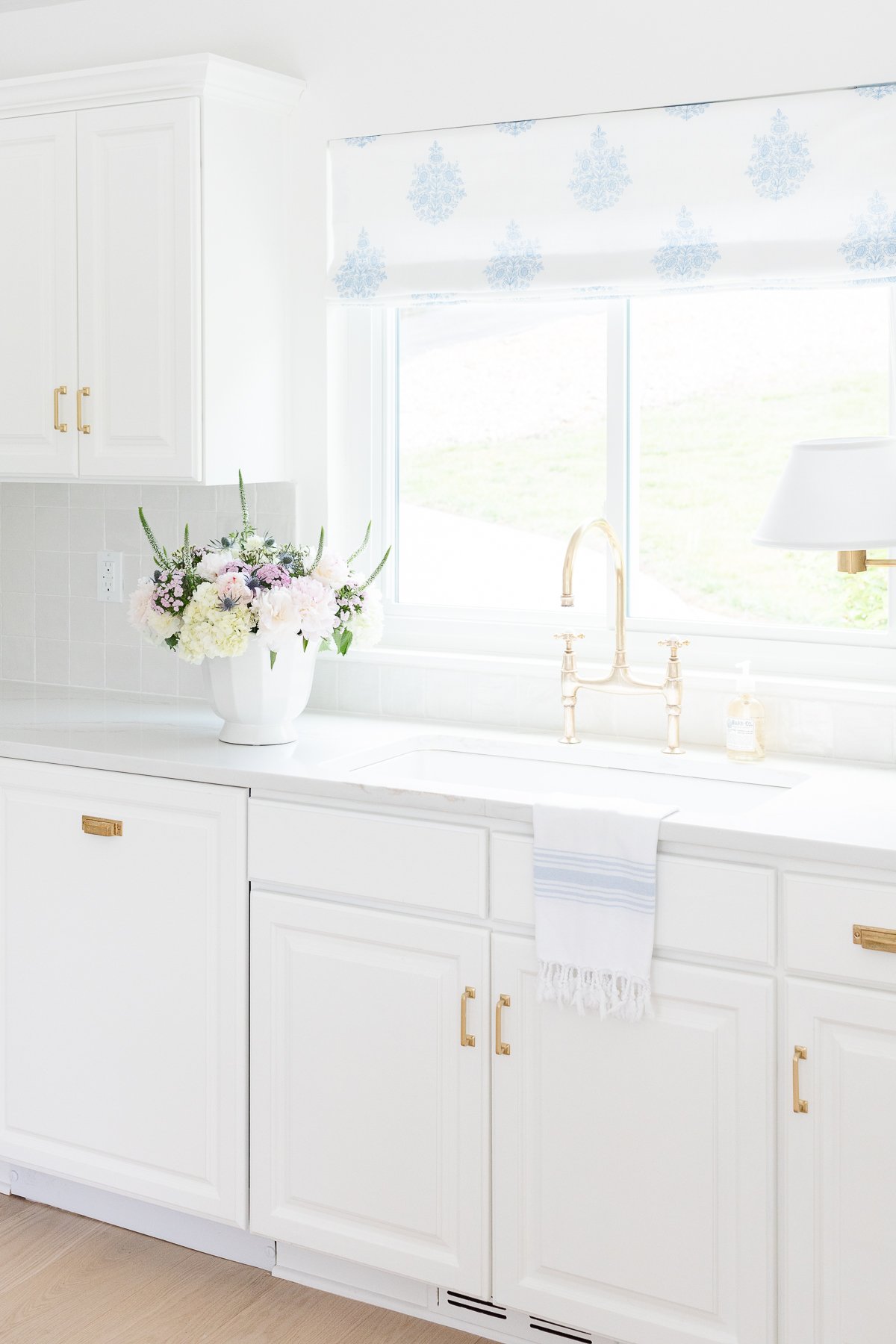
When I was planning our kitchen renovation, I knew I was designing my dream kitchen. I made sure to choose pieces that were classic, timeless, and that I knew I would love for years to come.
I wanted every piece to work hard and look beautiful doing it. Fortunately, when it comes to faucets there was a perfect solution.
Bridge Faucets
I have an unlacquered brass faucet in my kitchen in our St. Louis home, and I just installed one in our lake kitchen, too!
For our more traditional home, I chose a design with subtle curves and traditional lines to match the more classic, traditional style of the space.
At the lake, I wanted something that was equally timeless but a touch more modern, in keeping with the Modern Coastal style of our cottage.
I am beyond thrilled with my faucet choices for both of our homes. Keep reading to see if a bridge faucet could be the perfect fit for your space, too! And don’t skip the details on our Quartz Countertops if you’re looking at countertop options.
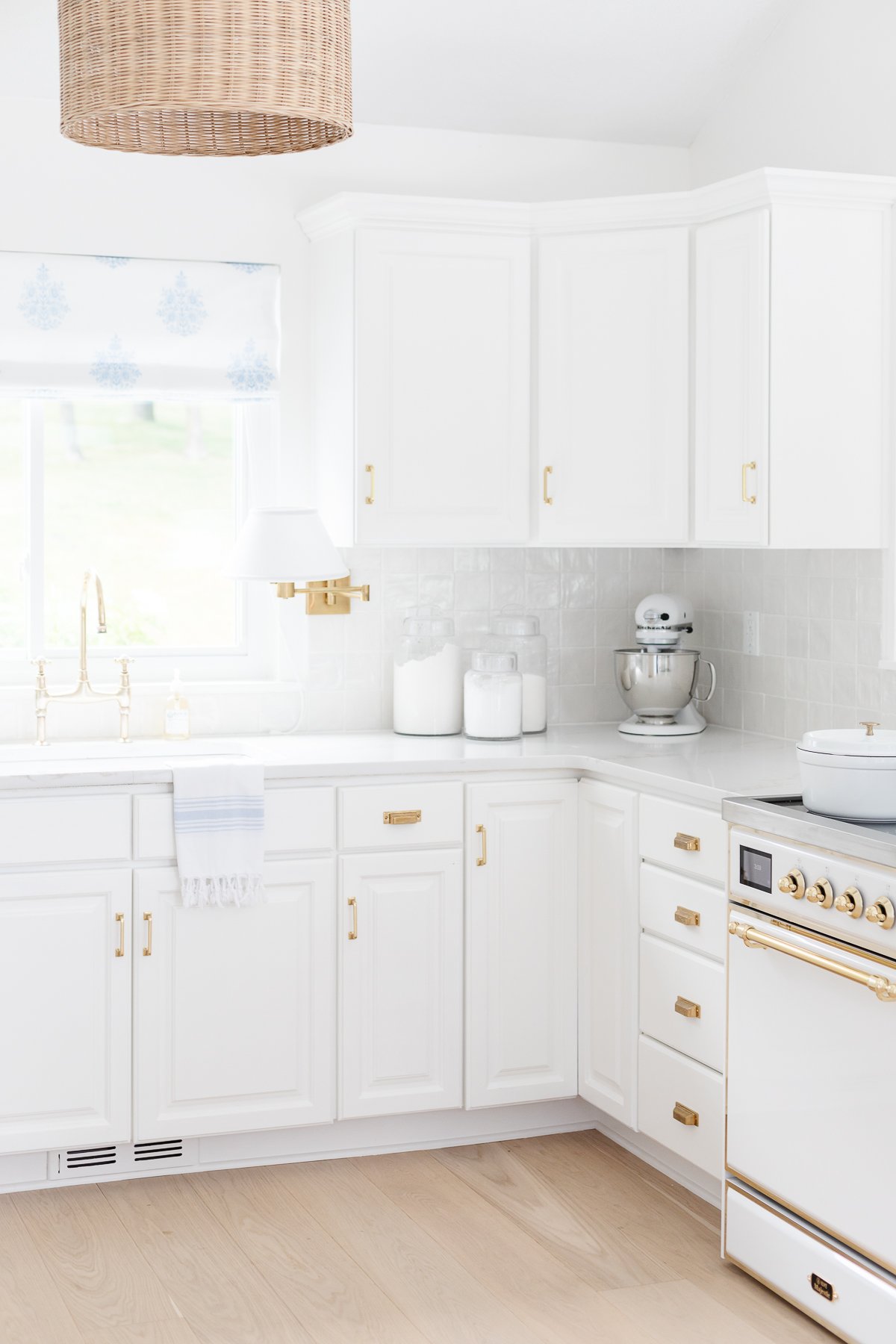
What Is a Bridge Faucet?
A bridge faucet has two handles – one for hot water and one for cold – that are joined by a horizontal connector pipe. The pipe is exposed above the countertop rather than underneath it. It forms a “bridge” between the hot and cold water lines.
The faucet spout connects up and off the center of this bridge piece. In some designs, the faucet intersects the bridge and goes through its own hole into the sink. For this reason, this type of faucet can have either 2- or 3-hole installation.
My kitchen faucet was a 2-hole installation. You can see that the spout connects to the bridge, but it doesn’t go all the way to the marble countertop. I love the clean look that it gives underneath the bridge. Note that I also have a matching hand sprayer that required its own hole.
Another interesting part of the design is that a bridge faucet is a single piece, rather than several individual pieces. Regular faucets may have two separate handles plus a faucet, each with its own hole.
Since a bridge faucet is all one piece, it commands attention wherever it’s used. It’s a real showstopper!
History of Bridge Kitchen Faucets
Of course, the idea of a faucets isn’t anything new. Ancient Romans used lead pipes to conduct plumbing for their private baths and public shower houses.
- The earliest faucets had two spouts – one for hot water water and one for cold. In 1937, Al Moen invented the single stream faucet, where the hot and cold water could mix and come out of a faucet together at a preferred temperature. Moen faucets are still a popular choice today, more than 80 years later!
- Bridge faucets may be popular now, but there isn’t anything “trendy” about them. They are a classic design that dates back to the turn of the 20th century. They have a timeless quality that makes them perfect for traditional styles.
- With their popularity, however, bridge faucets have evolved to fit into any design style. Of course, they will always be at home in traditional, farmhouse, or cottage kitchens.
- However, now you can find sleek, streamlined designs that look stunning in modern and contemporary kitchens. No matter what your aesthetic, there’s a bridge kitchen faucet to complement it.
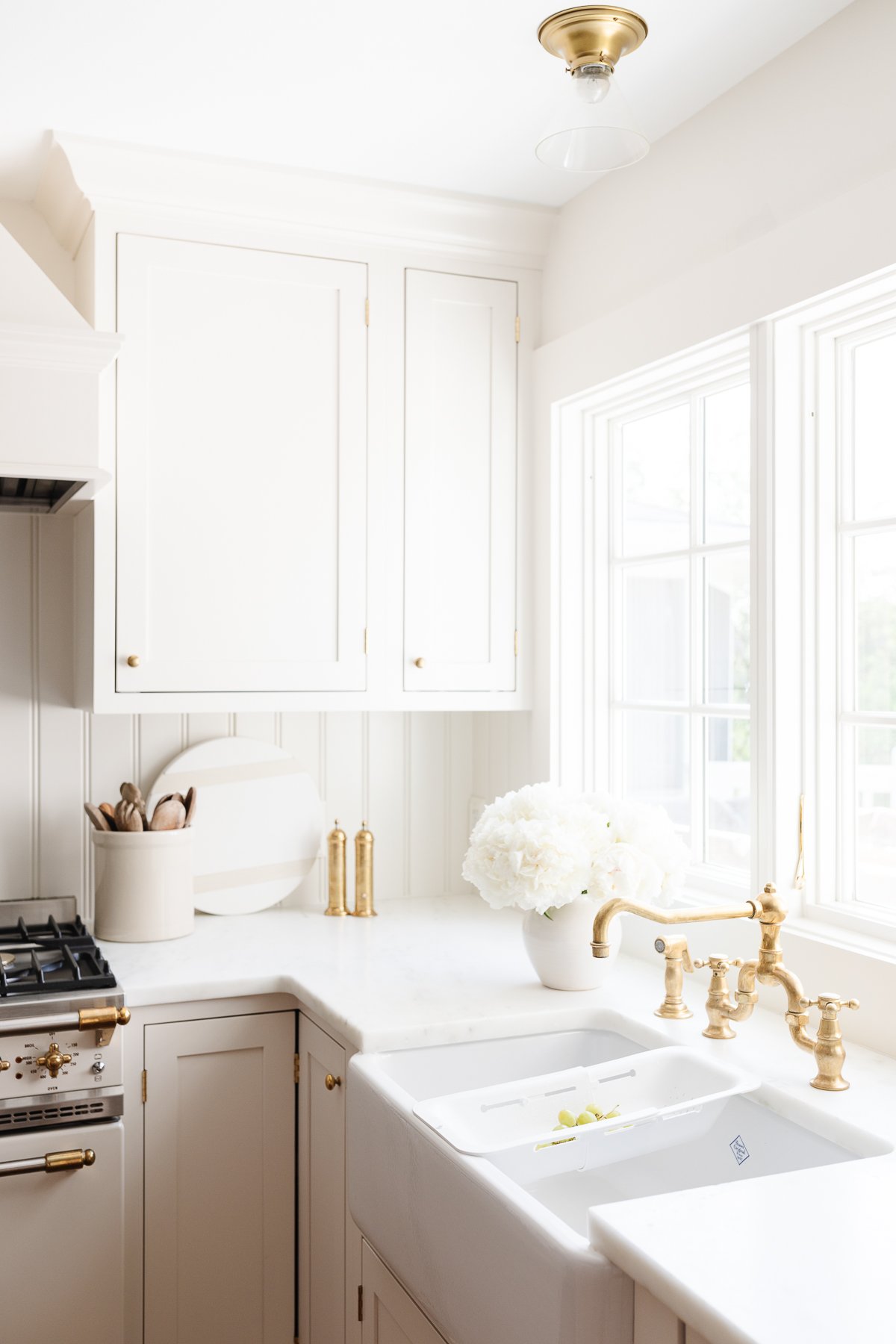
Pros
There are so many reasons to consider adding a bridge kitchen faucet to your home. Here are just a few of them:
- Variety of options – There are countless styles to choose from, in any finish and to match any aesthetic. Plus they come in a wide range of prices, depending on the design, finish, and extra features you choose.
- Counter space – The all-in-one design means this type of faucet can often be narrower overall. That leaves more room to the side for a built-in hand sprayer or soap dispenser – or just a pretty vase of flowers!
- One part instead of several – No doubt about it, these faucets make a statement. Their solid design has a timeless quality to it that looks so beautiful.
- Temperature control – By controlling the hot and cold water lines separately, you can make small adjustments to get exactly the temperature you want.
- Extra height – Having the cross pipe exposed over the countertop (rather than underneath it) means extra clearance for your faucet spout. A few more inches are a gamechanger when you’re washing big pots or filling tall pitchers.
- No deck plate – Since the lines are connected by the bridge, there’s no need for a deck plate to rest on the countertop. Seeing the countertop gives a clean, fresh look.

Cons
Every decision comes with a flip side. Here are some other aspects to consider before making your choice:
- Operation – Bridge faucets aren’t hard to operate, but they do require a bit more effort than single-handle faucets. They require you to use both hands at once (or one hand adjusting one handle at a time). This takes some getting used to if you’ve been accustomed to the ease of a single handle.
- Space constraints – Side to side these faucets can save countertop space. However, because of their extra height they can be a bit snug in kitchens with low hanging cabinets or shelves above the sink. Make sure you measure your height clearance carefully before purchasing.
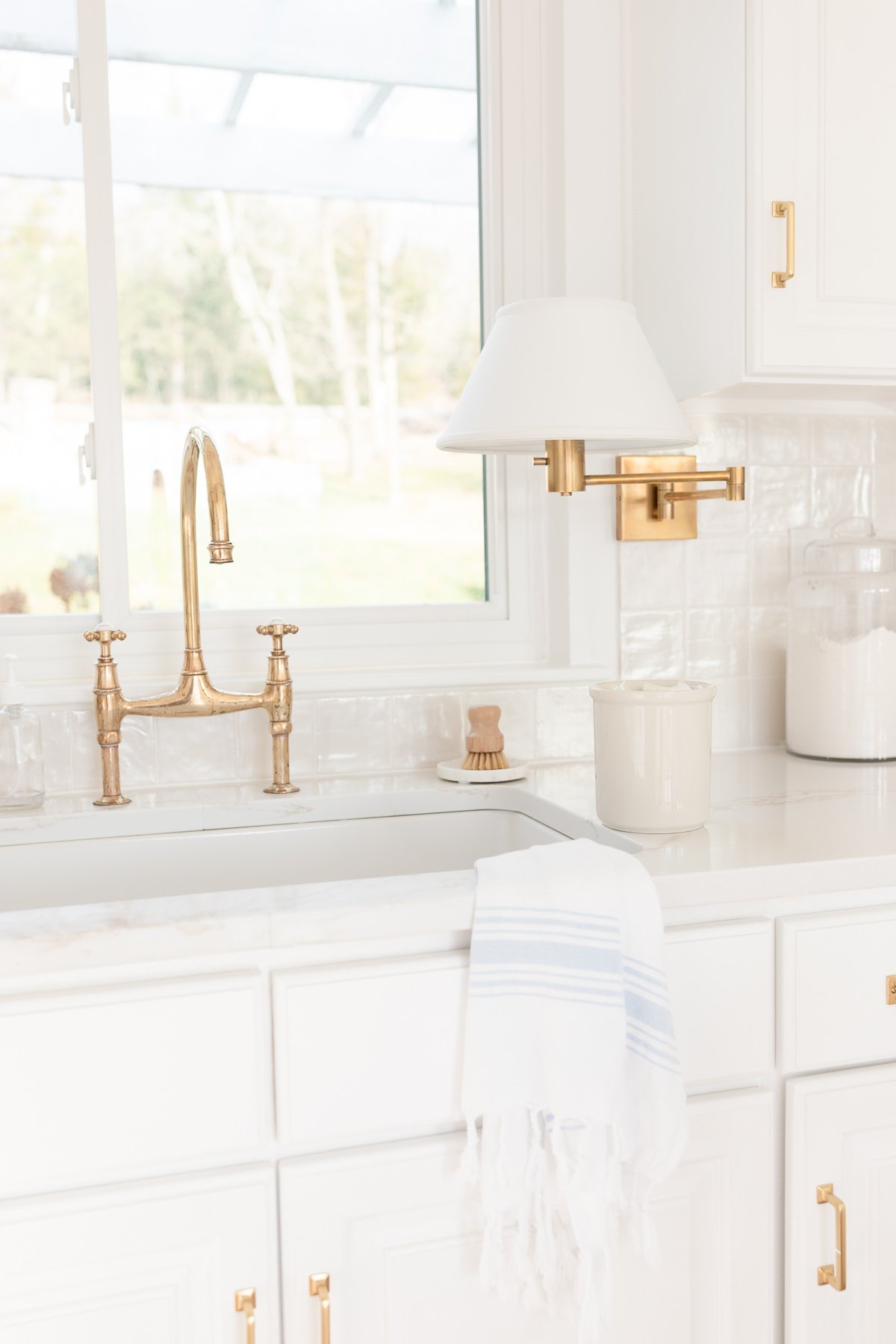
Installation
Depending on the faucet you buy, you’ll need two or three holes – one for the hot water, one for the cold water, and possibly one for the faucet spout. If you’re purchasing a new sink, you can choose one to match your faucet.
If you’re matching an existing sink, measure carefully to make sure your bridge faucet will fit the existing holes. Here are a few notes on what else to consider!
- Pay attention to any accessories you may want, such as a soap dispenser, hand sprayer, or drinking tap. Each of those will need its own hole, so plan accordingly.
- Also, if your faucet doesn’t come with the accessories you want, make sure to purchase them to match.
- If your counter space is limited, or if you just like the look, bridge faucets can be wall mounted. This means they’re mounted on the wall over the sink instead of on the edge of the sink or countertop.
- Wall mounted faucets have a higher splash potential than countertop faucets if they’re not properly measured or if their water stream isn’t angled properly.
- They also require plumbing and valve work behind the wall. It’s best to plan in advance for a wall-mounted bridge faucet or to leave the installation to the professionals.
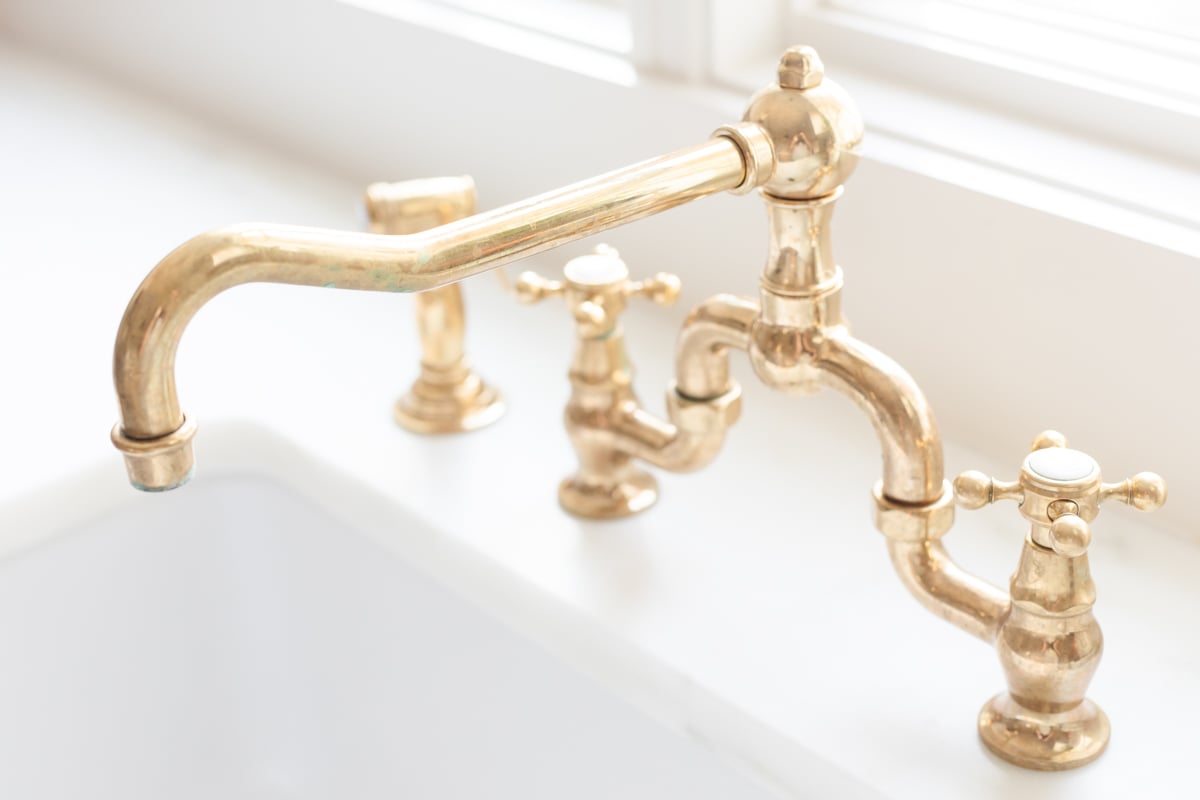
Costs
Like with any fixture, the cost varies by quality, material, design, function, and extra features like pull-down sprayer and touchless spray.
- On average, expect to pay $400 to $700 for a good-quality bridge faucet. Don’t be tempted to pay less than $150 for one, even though technically you can find one for less. Any bridge kitchen faucet for much less is likely not constructed in a fashion that is befitting long-term use!
- They can cost as much as $2,000 or more for name brand models with modern features and high-end design with materials like unlacquered brass. Buy what you love, but remember that higher cost doesn’t necessarily mean better quality.
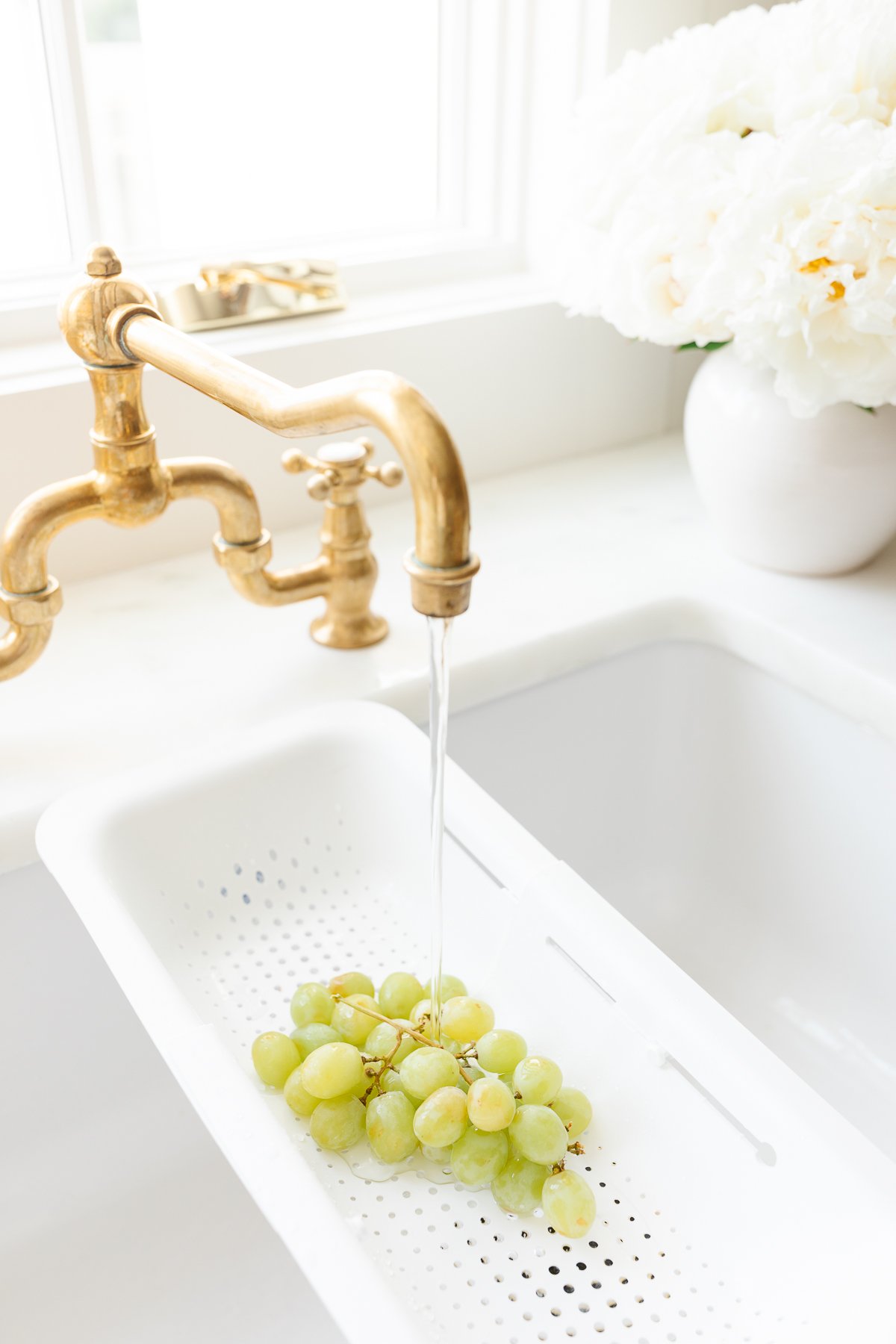

Tips
If you think a bridge faucet may be perfect in your kitchen, here are some tips of what to look for as you search for the perfect one:- Quality & durability – When it comes to faucets, looks aren’t everything. Of course, you want to love what you see, but you also need something that will stand up to a lot of daily use.
- Measure twice – Measure not only how far apart the holes are, but also how much overhead space you have and how high you want the spout. It may not seem like a big deal, but these faucets look best when they have room to shine.
- Quality finish – It’s okay to love current trends, but also look for metals that will be easy to clean and maintain. Matte black looks great but it will show water spots. Brass is beautiful, but be aware that it will patina – that’s part of its natural beauty.
- Ceramic valves – Faucets with ceramic valves are subject to fewer leaks and drips. That’s a must-have in any kitchen.
- Cost – Higher cost doesn’t necessarily mean higher quality, but you still shouldn’t buy the cheapest option you can find. Plan on spending at least $150 for a decent bridge faucet, and that is on the low end of the spectrum.
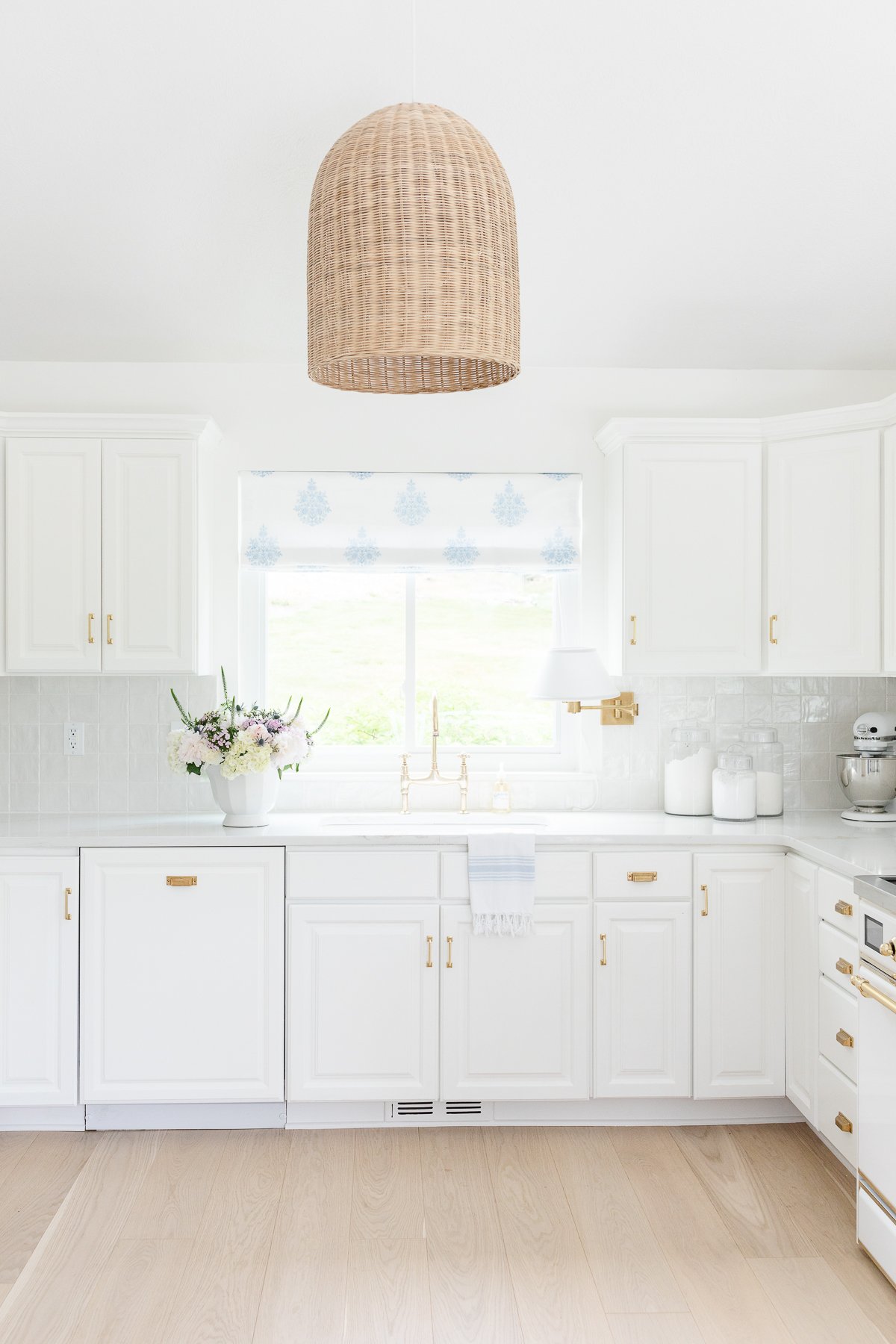
Frequently Asked Questions
Consider brands such as Rohl, Perrin & Rowe and Newport Brass for high end faucets that will fit right into your luxury kitchen.
There are three basic styles of faucets – single-handle, center-set, and widespread. Wall-mount and bridge faucets are becoming more popular, but often require special fittings and plumbing.
Shop This Post
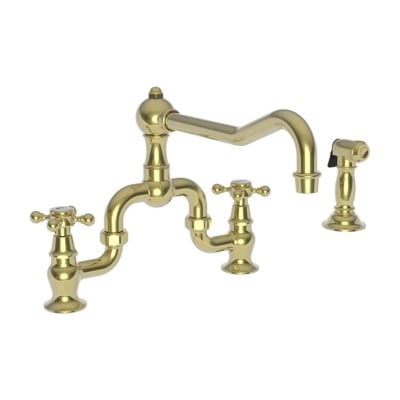
Chesterfield
Newport Brass Chesterfield Kitchen Faucet with Sidespray (as seen in our St. Louis kitchen)
Georgian Era
Perrin and Rowe Georgian Era Bridge Faucet (as seen in our lake kitchen)
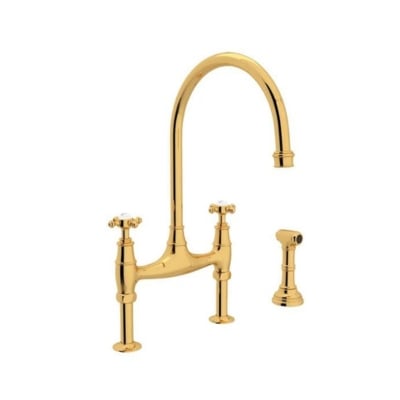
What do you think? Would a bridge faucet enhance your kitchen design aesthetic? Here are a few more of our favorite brass bridge faucets.
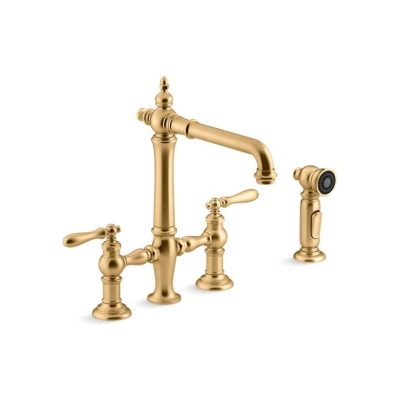
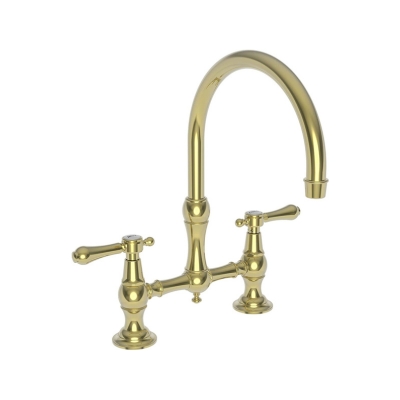
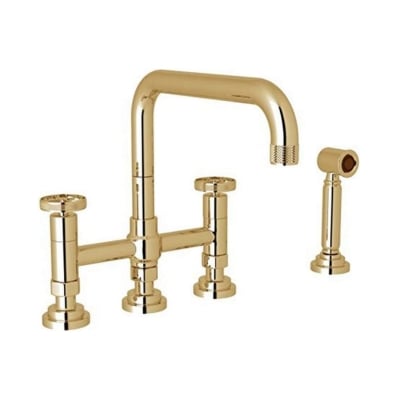
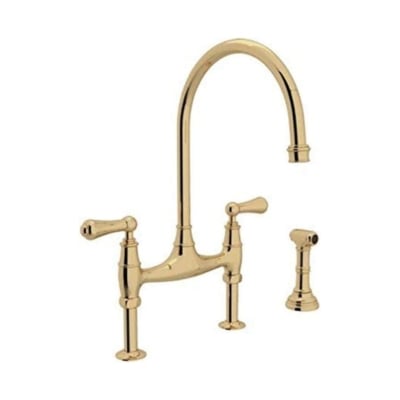

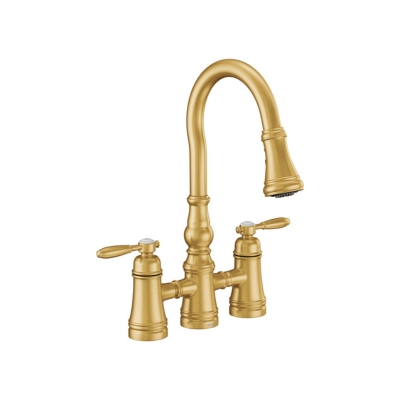
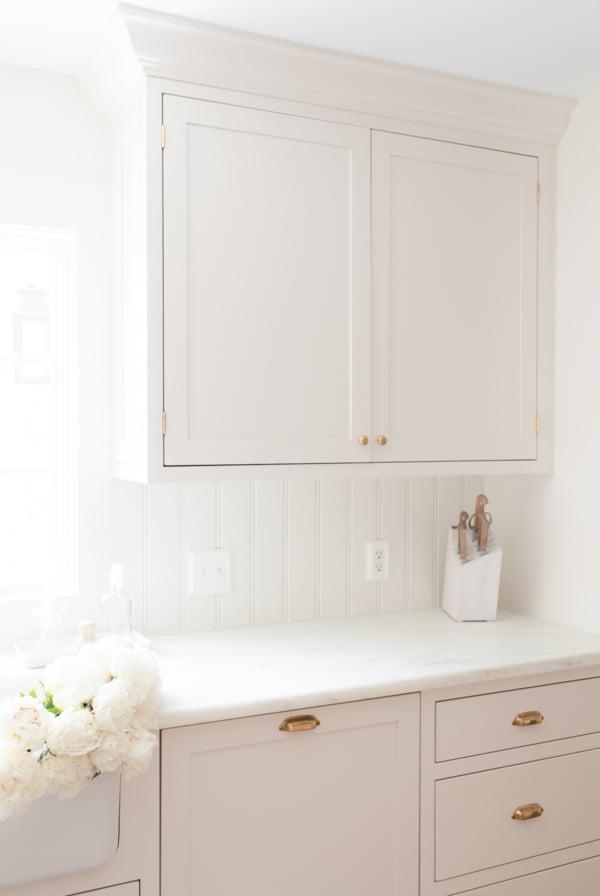
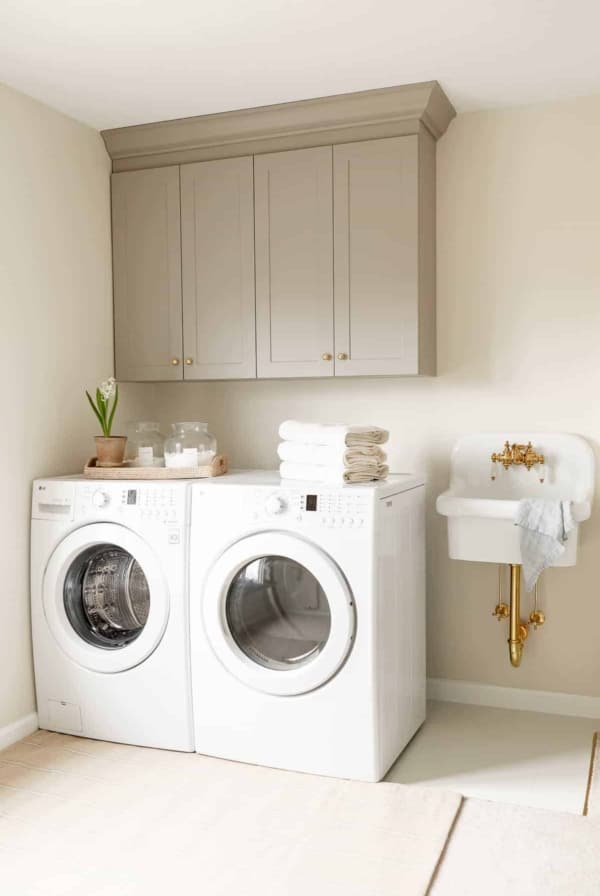
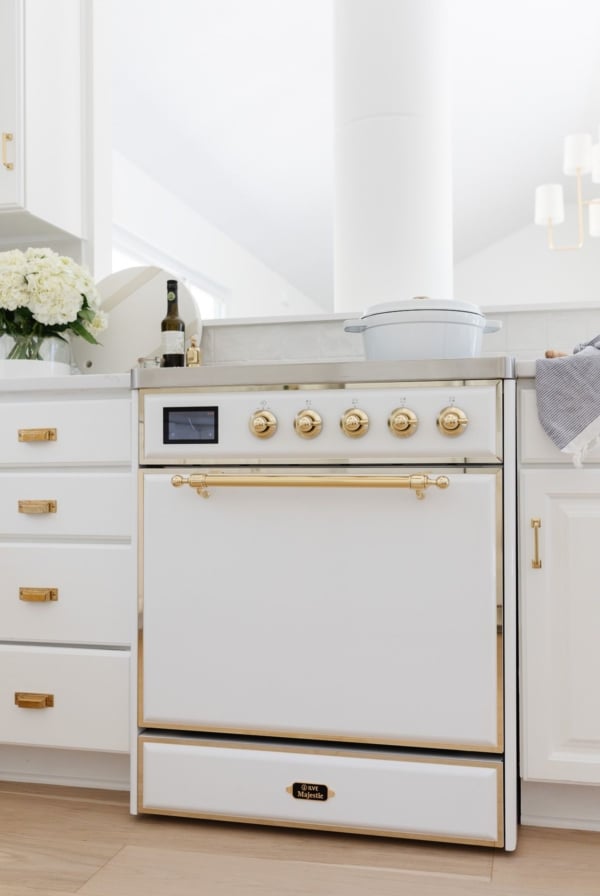
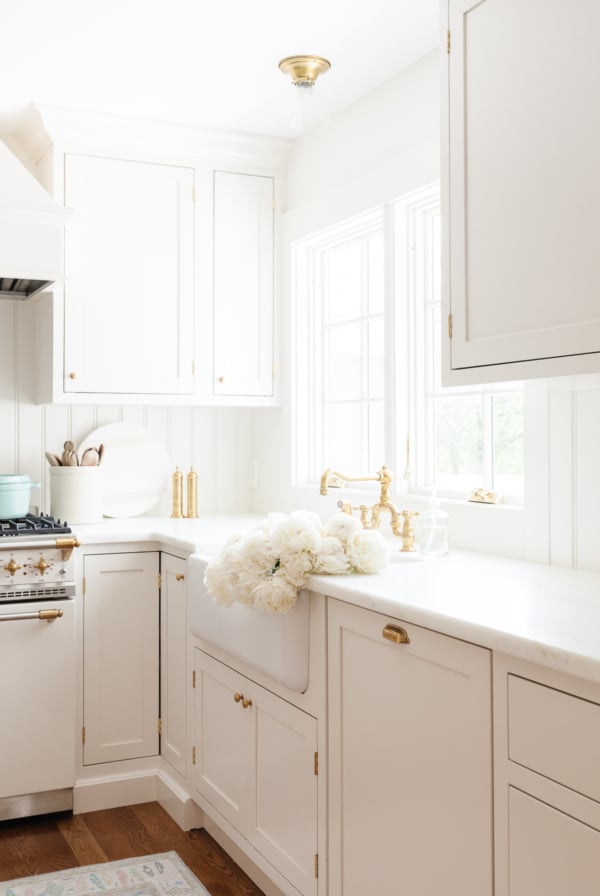

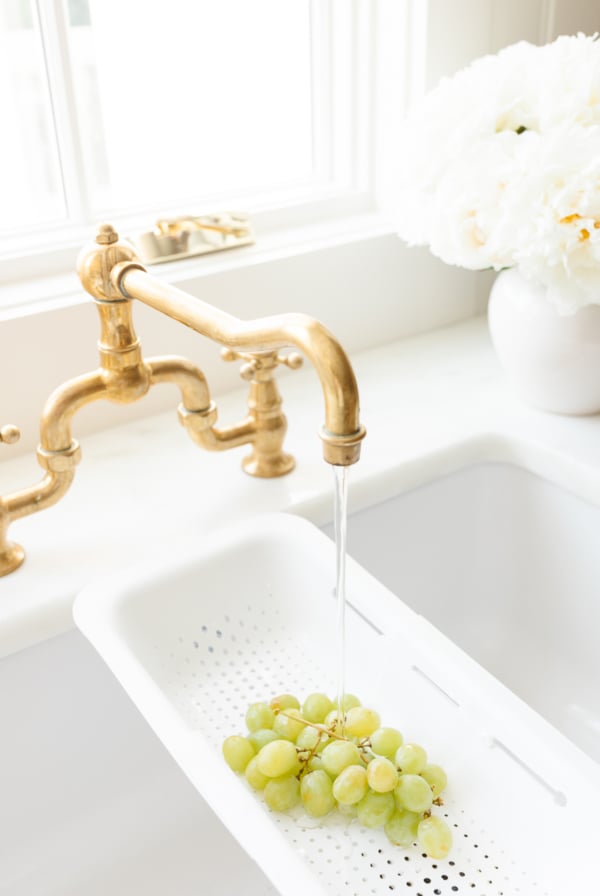
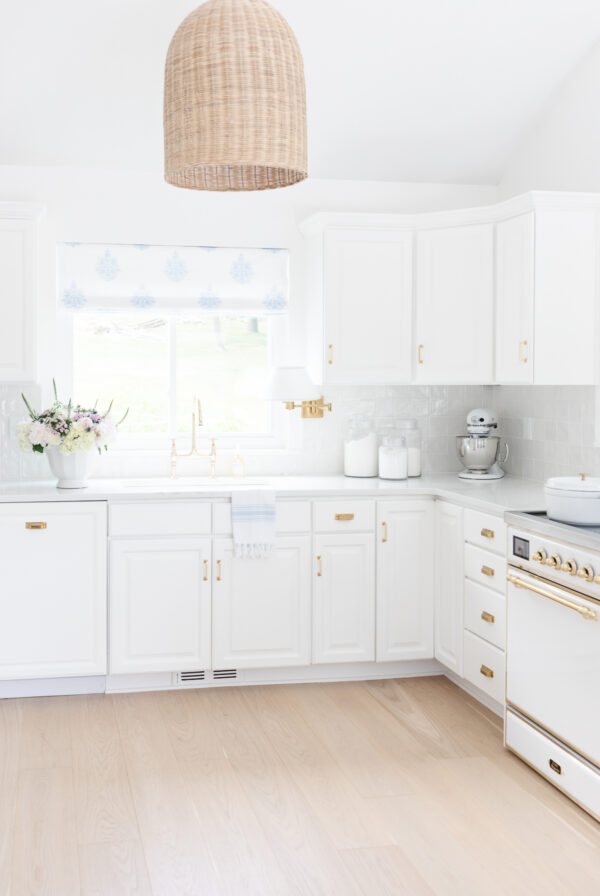
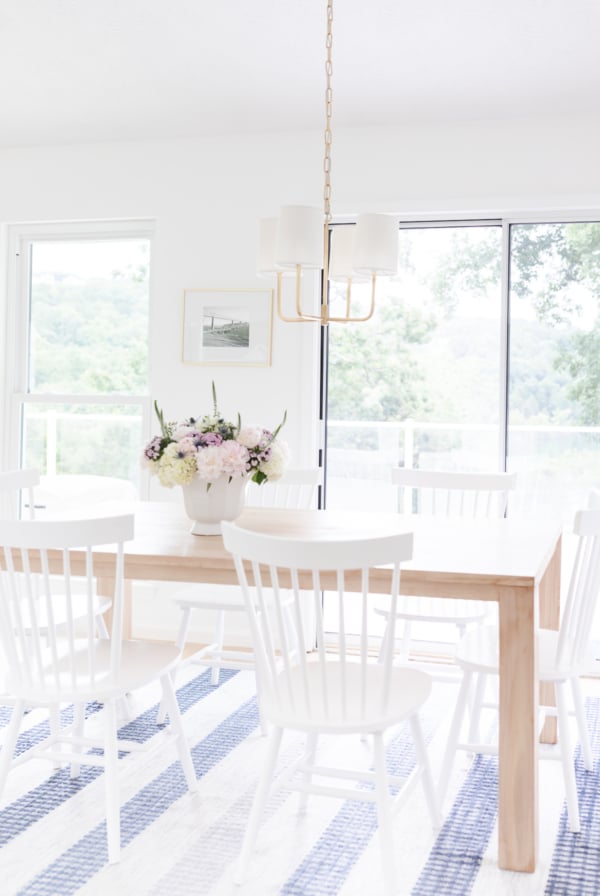






Hi there! Does your side sprayer work with both hot and cold or just one or the other? I’m looking at purchasing a two-hole bridge faucet similar to yours and can not find any information about the side sprayer being cold-only or both hot and cold. Since these types don’t have the center pipe down the middle I’m not sure if it’s possible for it to be hot & cold. Any insight you have on this would be greatly appreciated. Thanks!
Both!
I am using a Pfister bridge faucet with a farm sink. I wondered if having 5 holes is too much :
A side sprayer , an RO faucet and a soap dispenser . Thankyou . Your kitchens are beautiful!
Hi Barbara!
I couldn’t live without my side sprayer – it makes such a difference for cleaning. I think it will be beautiful!
Enjoy,
Julie
I stumbled across your blog and I’m glad I did! You have a beautiful kitchen. I am debating replacing my kitchen sink faucet to an unlacquered brass, but was wondering approximately how long it takes to get that charming patina finish? We may be moving in 1-2 years. I am in my kitchen all the time and using my faucet all throughout the day. I know it’s hard to probably answer that, but just wondering.
Thanks!
Not long at all! Took our lake house faucet a matter of weeks.
How do you like the unlacquered brass? I have heard that it will wear and show patina over time. I would love your thoughts on it vs the Italian brass by Rohl.
Yes it does which is precisely why I love it so much! If you are seeking something that stays bright I highly recommend polished brass.
Where did you buy your kitchen bridge brass faucets both and the price
Hi Myriam!
Both of our brass bridge faucets are linked in the post under the “Shop This Post” heading towards the bottom. Enjoy!
Julie